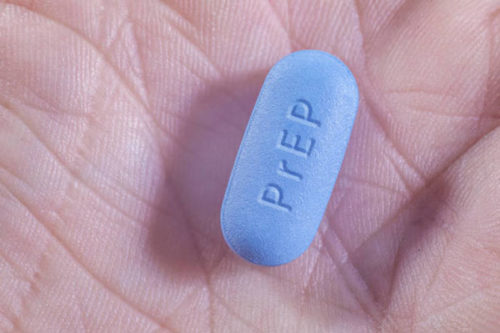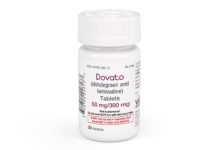This year, pre-exposure prophylaxis (PrEP) advocates noted a stunning disconnect between key organizations that issue guidelines on the use of tenofovir/emtricitabine (TDF/FTC, Truvada) for HIV prevention: The United States Centers for Disease Control and Prevention (CDC) continues to say that people need 20 days of daily TDF/FTC before they can consider themselves protected from vaginal HIV exposure — but the World Health Organization (WHO) has stated that just seven days of the drug is enough.
 Why the disconnect? How come two respected and influential organizations are providing contradictory information? What should physicians and community health workers tell people with vaginas and their partners about how long they need to take PrEP before it becomes effective?
Why the disconnect? How come two respected and influential organizations are providing contradictory information? What should physicians and community health workers tell people with vaginas and their partners about how long they need to take PrEP before it becomes effective?
(Note: No specific research has evaluated PrEP levels in vaginal or rectal tissue of transgender women or transgender men, so all recommendations are based on assumptions of relative equivalency of data from other populations.)
These were among the questions that the advocacy organization AVAC attempted to begin to answer in two webinars featuring pharmacologists, PrEP physicians, advocates and guideline developers from the CDC and WHO.
It was, at times, a dive into some pretty complex science. Researchers have to try to draw conclusions that can be used in the real world based on laboratory experiments, small-scale studies, pharmacological principles and mathematical modeling. Scientists who respect each other’s work sometimes have different interpretations of the same data.
Mitchell Warren of AVAC warned participants that they would be unlikely to come to a definitive truth by the end of the discussion. But, he hoped that the conversation could make it clear what scientists know and don’t know, as well as what they believe and don’t believe about time to protection with PrEP.
Most Important? Good Adherence
Dawn Smith M.D., M.P.H., of the CDC said that safety was a key concern: “If we tell one group of people that after X days of drug you’re as protected as you’re going to be, and we’re wrong, then we’re exposing people to risk.”
But, she said that health care providers could use a model of shared decision making, explaining to patients that there are differences of opinion on the issue. Smith said that, when providing PrEP, she might give her own estimate of time to protection, as well as differing estimates from other experts, with some explanation of why they are different. She would let individuals consider their own priorities and make the decision that feels right for them.
The 2016 WHO guidelines summarize the available evidence as follows: “Pharmacological studies suggest that full protection may require 4 doses for anal sex and 7 doses for vaginal sex.” The CDC’s guidelines were last updated in 2014 and acknowledge the gaps in the scientific data. The CDC states that maximum concentrations of tenofovir “are reached in blood after approximately 20 days of daily oral dosing, in rectal tissue at approximately 7 days, and in cervicovaginal tissues at approximately 20 days.”
But, Smith said that she would emphasize to a patient that by far the most important factor for PrEP effectiveness is taking the drug regularly: good adherence on an ongoing basis.
What We Do and Don’t Know
Lab studies show how long it takes for a maximum concentration or “steady state” of drug to be reached in blood, in vaginal tissue and in rectal tissues. Drugs vary in how long they take to achieve this concentration in different parts of the body.
The PrEP pill Truvada contains two active drugs, tenofovir and emtricitabine, both of which have an inhibitory effect on HIV.
Many more studies have been done on how tenofovir behaves in the body than on how emtricitabine behaves. Those studies show that, after five to seven days of taking tenofovir, high levels are reached in rectal tissue, but it may take around 20 days for equivalent levels to be achieved in vaginal tissue. These studies were the basis for the CDC’s recommendation.
There are fewer studies on emtricitabine, but they show that the drug is actually better at reaching high levels in vaginal tissue than in rectal tissue. Steady state in vaginal tissue may be achieved after just one or two days of daily dosing.
But Craig W. Hendrix, M.D., of the Johns Hopkins Bloomberg School of Public Health said that we shouldn’t assume that reaching this level is the objective. “Time to protection is not necessarily the same as time to steady state,” he said. A drug might offer enough protection earlier, at a lower level.
A big challenge for researchers is defining the drug levels that are likely to be protective. While there are well-defined data from the iPrEx study showing what levels of drug concentration in blood correlated with remaining HIV negative when having anal sex, it’s less clear from PrEP studies what blood drug concentrations correlate with protection from HIV in people having vaginal receptive sex.
But what about protective drug levels in vaginal or rectal tissues? In large-scale clinical trials of PrEP, blood samples are regularly and routinely collected, and researchers know which participants remain HIV-negative. Taking samples of vaginal or rectal tissues is much more complex, requiring biopsies, so it hasn’t been routinely done in clinical trials. This means that we’re less sure which drug levels in tissue (rather than blood) correlate with PrEP effectiveness.
Scientists are also unsure of exactly where in the body PrEP needs to go to have effect. For exposure to HIV during vaginal sex, is the aim to achieve high drug concentrations in vaginal tissue? Or, does PrEP in fact only work when high drug concentrations are reached throughout the body? Researchers know that PrEP works; they are just not sure exactly how and where it works.
The key study that influenced the WHO came from Angela Kashuba, Pharm.D.; Mackenzie Cottrell, M.S., Pharm.D.; and colleagues from the University of North Carolina and was published in the Journal of Infectious Diseases in 2016.
Cottrell told the webinar that the study involved giving single doses of PrEP drugs to 48 cisgender women and measuring drug concentrations in various parts of the body over the next 48 hours. The researchers then built a mathematical model to predict how drug concentrations would evolve with ongoing dosing.
The model also estimated when target levels for PrEP efficacy would be achieved. Their target for PrEP efficacy considered additional cellular factors that would affect drugs’ ability to inhibit HIV replication.
According to this modeling, everyone taking TDF/FTC PrEP will achieve the target efficacy by the third daily dose in both vaginal and rectal tissues. Time to protection is actually quicker for vaginal tissue than rectal, with one or two daily doses appearing to be sufficient.
But, the study also confirmed the particular importance of good adherence for receptive partners in vaginal sex. If only two doses were taken a week, the model predicted that just two-thirds of people would have protection in vaginal tissues, whereas 95% would have protective levels in rectal tissue.
CDC officials are considering the implications of this study. “We need to understand why different studies are getting different results before we change our estimation for time to protection,” Smith said.
In terms of things we don’t know, a key research gap is how this information applies to transgender people. Studies examining vaginal tissue likely included only vaginal tissue from cisgender women. They are unlikely to include neovaginal tissue from transgender women who have had gender confirming surgery or vaginal tissue from transgender men who may be on hormonal therapy.
There is an analysis from the iPrEx study showing that PrEP is protective for transgender women who have detectable drug in their blood, but that analysis didn’t include vaginal tissue. Given the lack of studies done with transgender women or transgender men, all recommendations are based on assumptions of relative equivalency of data from other populations.
So, What’s the Bottom Line?
“These differential recommendations are very problematic for how we message and how we talk to people,” commented Jim Pickett of the AIDS Foundation of Chicago. “If I was coming to this from the outside, it would look to me like we are valuing women’s safety and health more in the United States than we are in other countries.”
Women’s health advocate Anna Forbes said that physicians’ first principle should be to “do no harm.” As it’s clear that higher levels of adherence are needed for vaginal protection and that some women will miss some doses, she said that it would be best to err on the side of caution and stick with the CDC’s recommendation of 20 days.
But, PrEP researcher and physician Bob Grant M.D., M.P.H., of the University of California, San Francisco, said that there was another way to consider the obligation to “do no harm.”
“We may think that it’s safer to recommend 20 doses before full protection is achieved, but in practice, that might mean that women who would benefit from a week of PrEP choose not to use it at all,” he said. “In our effort to do no harm and be conservative, we may end up doing harm.”
Sheena McCormack M.B.B.S., M.S., agreed that setting the bar too high would discourage too many women from starting PrEP — or from re-starting it after a break. Her clinical advice would be that a conservative (cautious) estimate was seven days, but that PrEP was highly likely to be effective after two days. She added that the same drugs are used for post-exposure prophylaxis (PEP), suggesting that they are still able to block infection after sex.
Grant noted how much uncertainty there is in the medical literature. “In situations like this, clinicians are well served by becoming curious about the particular patient that is sitting in front of them,” he said. “Why is this an important question for them?”
Clinicians’ answers may differ depending on what is driving each patient’s concerns, Grant said. He gave the example of a couple he’d recently seen in which the female partner did not have HIV and wanted to become pregnant with her HIV-positive male partner. They wanted to know after how many days of PrEP they could safely stop using condoms. As this couple was not in any hurry, Grant said he was happy to give the most conservative estimate of time to protection: 28 days.
But, if a patient came in on a Thursday asking if there were any point in starting PrEP in anticipation of a big party planned for Saturday, the advice would be different. “That first dose of PrEP is going to give you a substantial level of protection, and it only accumulates after that,” Grant would say.
Grant agreed that taking the drug regularly is a more important focus. “Instead of spending a lot of time arguing about how long it takes to get to protection, we could be working with someone on how to improve adherence,” he said.
Source: thebodypro.com


 ПОИСК ПО САЙТУ
ПОИСК ПО САЙТУ  поиск по ресурсному центру
поиск по ресурсному центру 



